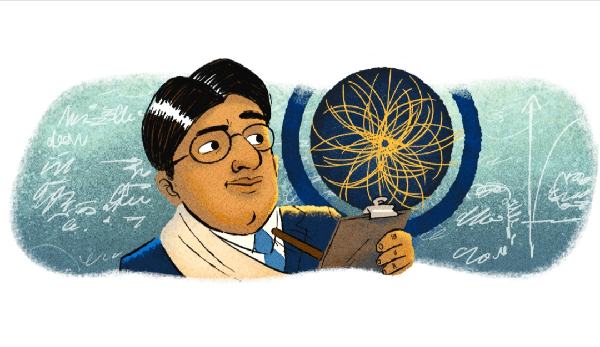Google doodle pays tribute to Indian mathematician and physicist Satyendra Nath Bose on June 4. On this day in 1924, he sent his quantum formulations to Albert Einstein and he immediately recognised it as a significant research in quantum mechanics.

Google pays tribute to Indian mathematician and physicist Satyendra Nath Bose through doodle on June 4. He was best known for his work on quatum mechanics in the ealry 1920s. On this day in 1924, he sent his quantum formulations to Albert Einstein after it was rejected by a prominent science journal ‘The Philosophical Magazine.’
Satyendra Nath Bose was born on 1 January, 1894 in Kolkata. He used to solve an arithmetic problems given by his accountant father before leaving for work, which ignited his interest in mathematics.
At the age of 15, he started pursuing Bachelor of Science degree at Calcutta’s Presidency College. After that, he went on to earn his Master’s in Applied Mathematics from the University of Calcutta. Graduating top of his class for both degrees, he solidified his esteemed position in academia.
By the end of 1917, Bose started giving lectures on physics. “While teaching postgraduate students Planck’s radiation formula, he questioned the way particles were counted and began experimenting with his own theories. He documented his findings in a report called Planck’s Law and the Hypothesis of Light Quanta, and sent it to a prominent science journal called The Philosophical Magazine. To his surprise, his research was rejected,” Google wrote in a blog.
Also Read:- Google Doodle celebrates 144th birthday of Gama Pehlwan, one of best wrestlers of all time
Satyendra Nath Bose sent his research to Albert Einstein
After that, Satyendra Nath Bose mailed his research to Albert Einstein and he immediately recognised it as a significant research in quantum mechanics. Einstein soon applied Bose’s formula to a wide range of phenomena.
Bose’s theoretical paper became one of the most important findings in quantum theory. In honor of Satyendra Nath Bose’s legacy, any particle that conforms with his statistics today is known as a boson.
For his tremendous contributions to physics, the Indian government awarded Bose the Padma Vibhushan, India’s second highest civilian honour. He was also appointed as National Professor, the highest honour for scholars in India.
“As a true polymath, Bose went on to serve as president of many scientific institutions including the Indian Physical Society, National Institute of Science, Indian Science Congress and the Indian Statistical Institute. He was also an adviser to the Council of Scientific and Industrial Research, and later became a Fellow of the Royal Society,” Google wrote.
“Many scientific breakthroughs have come from his work including the discovery of the particle accelerator and the God particle”, Google added further in a blog.
Also Read:- Google Doodle pays tribute to Naziha Salim, one of Iraq’s most influential artists
